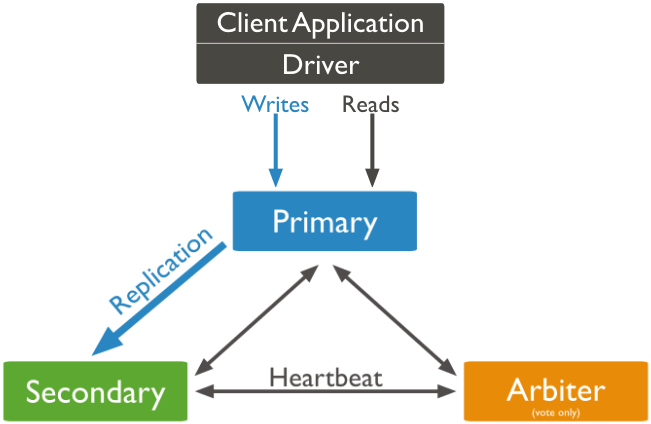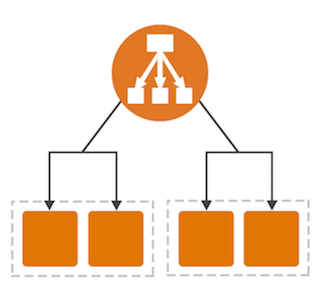Clustering and Load Balancing
What are Clustering and Load Balancing
Server Clustering is a method of turning multiple computer servers into a cluster, which is a group of servers that acts like a single system.
Load Balancing is about the distribution of workloads across multiple computing resources, such as computers, server clusters, network links, etc. Load balancing aims to optimize resource usage, maximize throughput, minimize response time, and avoid overload of any single resource.
A MongoDB Replica Set is a group of mongod processes that maintain the same data set. Replica sets provide redundancy and high availability, and are the basis for all production deployments.
High availability (HA) is a general characteristic of a system, which aims to ensure an agreed level of operational performance, usually uptime, for a higher than normal period.

RESTHeart has always been a very good fit for Microservices and other styles of distributed architecture. It has been deployed successfully with clustering technologies such as AWS ECS and Fargate, Kubernetes and many others.
How it used to work
RESTHeart basically receives HTTP requests and transforms them into MongoDB queries, through the Java driver. Creating a cluster has been a matter of putting a plain HTTP load balancer on top of the chosen clustering technology, exactly as one would do with any other HTTP server.
However, a cluster of RESTHeart v3 nodes requires sticky sessions, otherwise the RESTHeart node could receive an authentication token created by another instance, which results in a HTTP 401 “Unauthorized” error.
As RESTHeart instances don’t communicate directly (to avoid expensive synchronization steps), then they can’t validate authentication tokens created by other instances in the same cluster. To overcome this situation, the HTTP Load Balancer inserts a sticky session token into a cookie and then handle the communication flow from clients to RESTHeart instances accordingly. Sticky sessions, from an architectural point of view, introduce a level of statefulness in the system and their expiration timeout must be carefully tuned.
This basic RESTHeart v3 clustering configuration is of course available also with RESTHeart v4 Open Source Edition. We suggest to ask our StackOverflow community for more information about this.
RESTHeart v4 new capabilities
RESTHeart v4 Enterprise and OEM Editions add a new feature to make clustering easier, without the need for any sticky session. This enables a fully stateless deployment.
RESTHeart v4, in fact, comes with a specialized Token Manager which creates cryptographically signed tokens that can be acknowledged by any RESTHeart node in the cluster without direct communication and synchronization among them: fast, simple and safe.

The Enterprise license is actually cluster based: it allows by default to create a single production cluster with up to two nodes. For OEM licenses, as they are volume-based, we need to have a chat with potential customers about their estimated volumes, so that we can package the best possible option.
Besides, customers will receive dedicated support and documentation for clustering and load balancing RESTHeart with MongoDB in highly demanding environments. For example, we illustrate how to setup our RESTHeart Platform Security component (which comes with any commercial license) as a super-lightweight load balancer, without the need to use any external product.
In summary, the top level steps for a highly available RESTHeart + MongoDB configuration are:
- Create a MongoDB Replica Set;
- Create a RESTHeart cluster connected to the MongoDB Replica Set;
- Put an HTTP Load Balancer on top of it.
If you want to know more about clustering, load balancing and high availability, please contact us.
References
To understand more in general about Load Balancing, Affinity, Persistence, Sticky Sessions you can read this article.